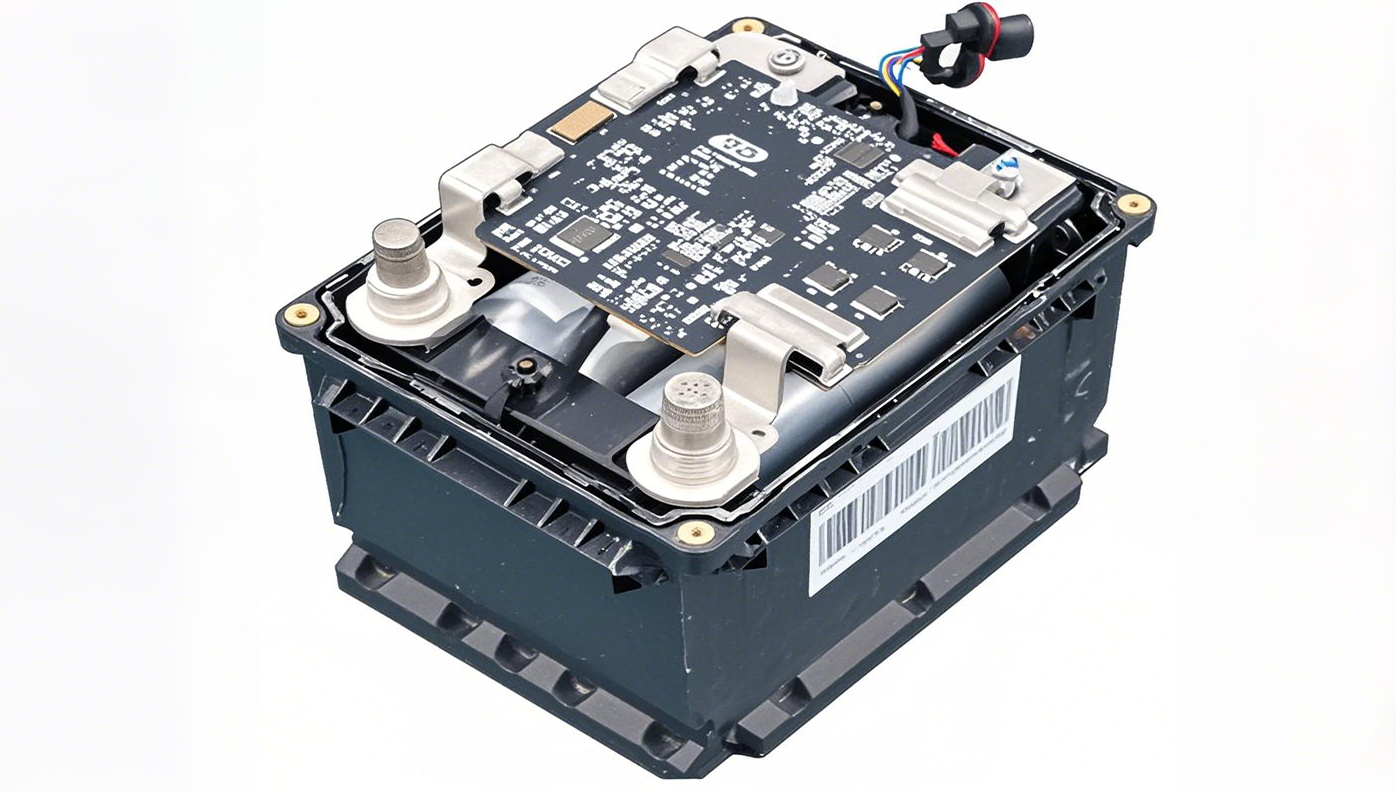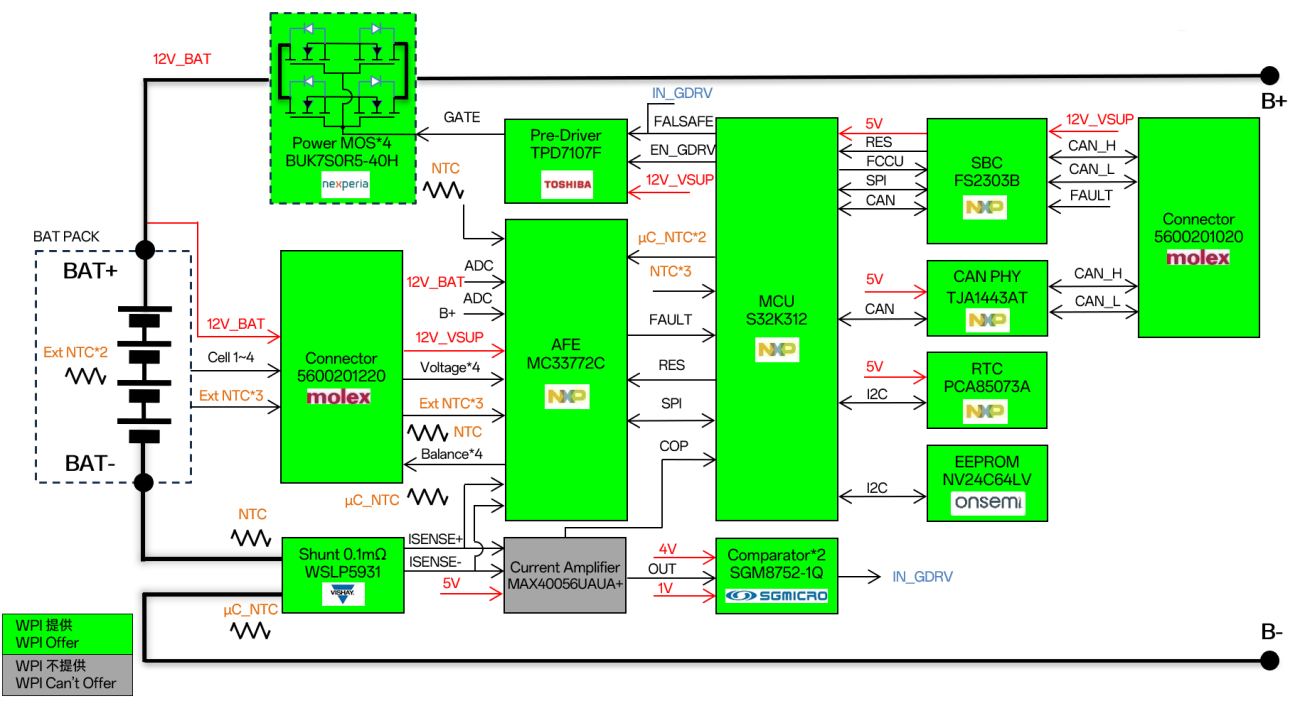Automotive 12V BMS Application Solution Based on NXP S32K312 MCU and MC33772C AFE
The car's 12V BMS system monitors the battery voltage and current in real time to assess the power level, helping users understand the remaining power and arrange usage appropriately. The system optimizes the charging and discharging process, improves battery efficiency, reduces energy loss, ensures balanced charging of each cell in the battery pack, and prevents overcharging or undercharging of individual cells to increase overall life. The system's real-time thermal management of batteries plays a vital role in battery performance, life, and safety.
The automotive 12V BMS solution based on the NXP S32K312 MCU corresponds to the management level of the 12V battery module. It can internally detect the total voltage of 4 battery modules of 12V (based on the actual battery). The development board has 4 voltage acquisition channels and 5 temperature acquisition channels (2 onboard and 3 external battery packs). It supports hardware charge and discharge overcurrent protection, diagnostic information reporting, SOC estimation, battery balancing (passive balancing) and other functions.
The solution uses one AFE (NXP MC33772CTP2AE). The MC33772C is a battery control IC designed for automotive and industrial applications. It supports up to six battery strings, analog-to-digital conversion of differential battery voltage (up to 256 average levels to ensure measurement accuracy), current acquisition, and also includes coulomb counting and temperature measurement functions.
For power supply, NXP FS2303B SBC is used. This chip has unique design and performance advantages. It can meet the stringent requirements of the latest generation of automotive electronic control units (ECUs) for system stability and safety, and fully adapt to its system and safety features. In addition to power supply, FS23 also integrates CAN transceiver, LIN transceiver, high-side driver and functional safety module. It can enable specific functions (such as configuring LDO1/2 output voltage) through OTP to meet the diverse needs of automotive applications. It is highly flexible, offering multiple device version options in terms of output voltage setting, operating frequency, power-on sequence, and input/output configuration to meet a variety of application requirements.
▶ Scenario Application Diagram

▶ Development Board Photos


▶ Solution Diagram

Core technology advantages
1. Support 4-way battery, single battery voltage sampling, can set overvoltage and undervoltage threshold alarm
2. Support charging and discharging circuit control, current collection, and hardware overcurrent protection
3. Support 5 temperature collection channels (2 onboard, 3 external channels to collect the temperature inside the battery pack)
4. SOC estimation, diagnostic information reporting, and disconnection detection functions
5. Comply with ASIL-B safety level
6. Onboard RTC IC, EEPROM and other slave devices
Solution Specifications
1. Single cell voltage sampling cycle is within 100ms, battery cluster current sampling cycle is 50ms, battery cell temperature sampling cycle is 1s
2. Support 4-way battery overvoltage and undervoltage alarm, the threshold can be set (default: overvoltage 3.65V, undervoltage 2.5V)
3. Hardware overcurrent and short circuit current 1500A protection
4. Support continuous working current 60A (3C), 259A (rated current in full temperature range), 580A (transient current in full temperature range within 5s)
5. Current acquisition accuracy reaches 2% (< 200A, national standard), 1% (≥ 200A, national standard)
6. Voltage acquisition accuracy reaches ±2mV
7. Support passive balancing, maximum supporting 300mA balancing current
8. The cumulative error of SOC estimation is less than 5%, which is in line with national standards.
9. Support battery high and low temperature alarm, threshold can be set (default: high temperature 70℃, low temperature -20℃)
